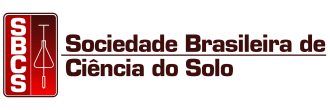HIGHLIGHTS
NH3 volatilization losses and N2O emissions from urine were higher than from dung
NH3 loss from cattle urine on N-fertilized grass was greater than on mixed pasture
Grass-legume pasture showed total N2O emissions lower than N-fertilized pasture
NH3 and N2O emission from excreta were similar to or below the IPCC default values
Soil N2O emission factor of N fertilization was under half the IPCC default of 1 %.
ABSTRACT
The largest proportion of greenhouse gas (GHG) emissions in the Agriculture sector of the Brazilian national GHG inventory is derived from the large (>200 million head) herd of cattle. The greatest contribution to these emissions comes from the enteric methane from cattle, but the direct and indirect emissions of nitrous oxide (N2O) from cattle excreta and N fertilizer are responsible for approximately 9 % of all national anthropogenic GHG emissions. Ammonia (NH3) can be volatilized from N fertilizer and cattle excreta and deposited in sites remote from the source, constituting an indirect source of N2O. This study aimed to determine whether direct N2O emissions and NH3 volatilization from N-fertilized pastures were greater than those derived from a mixed grass-legume pasture without N fertilizer addition. Emissions of N2O and NH3 from excreta and N fertilizer from a Palisade grass (Urochloa brizantha cv. Marandu) monoculture fertilized with 2 × 60 kg N ha-1 yr-1 urea were compared to those from a mixed Palisade grass-forage peanut (Arachis pintoi) pasture. Dung and urine were collected from these cattle, and NH3 losses and N2O emissions from the excreta and from N fertilizer were monitored using static chamber techniques. Volatilization of NH3 and N2O emissions were found to be greater from urine than from dung. Ammonia losses from excreta and urea fertilizer were low, not exceeding 6.8, 1.1, and 4.7 % of the N applied as urine, dung, and fertilizer, respectively. The N2O emissions showed a tendency to be greater for the urine from the N-fertilized compared to the mixed grass-legume pasture, and the N2O emissions from the urine of the N-fertilized pasture ranged from 0.08 to 0.94 % of applied urine N. The N2O emission from the N fertilizer was at maximum 0.46 % of the applied N. The direct N2O emissions and the loss of NH3 by volatilization (indirect N2O emission) from the excreta of cattle grazing the mixed grass-legume pasture were similar to, or lower than, the grazed grass monoculture fertilized with 120 kg N ha-1 yr-1. As the mixed pasture received no N fertilizer and hence no GHG emission from its manufacture or application, introducing forage peanut to the Urochloa brizantha pastures shows potential to be responsible for lower GHG emissions than the N fertilized grass pasture.
No tags for this post.



